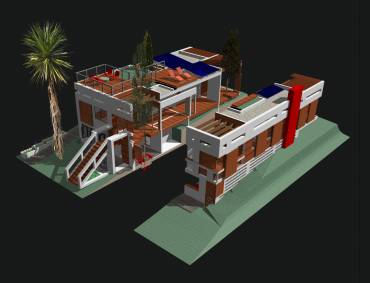Google has long been at the forefront of acquiring and cataloguing vast swaths of information around the world. Google Maps is a GPS technology used on most smartphones around the world, and provides its users with the ability to get driving or walking directions almost anywhere on earth. Google Earth was a more ambitious (if less practical) project which generated satellite imagery of almost everyone on the planet.
Google Earth allowed users to find a satellite image of their home, famous landmarks, or natural features such as the Mount Everest or the Nile River. Street View was Google’s ambitious multi-year project to catalogue and generate street-level images of every public road in the world. “Google has effectively catalogued the entire planet. The practical applications for this data in the future are enormous and exciting.” Said Scottsdale Arizona entrepreneur Jason Hope.

One area where Google has yet to significant dent is in the mapping of building interiors. The practical applications of this data would be enormous. For example, mapping of a home’s interior could make it far easier for a visually-impaired individual to get around on their own. This, coupled with interior mapping of local stores and restaurants could make it possible for the visually-impaired to be significantly more independent than they currently are able to be.
Another more mainstream application is the ability to use Google Map directions that can take you to the specific location of an office or store within a building. Instead of having your directions end when you arrive at an address, Google Maps could conceivably take you to within feet of your actual destination. If properly implemented, this technology would mean that users would never again get lost inside a building.
Another exciting possibility would be in the area of home improvement. Imagine mapping your entire home: the walls, floors, windows, everything. You could then take that data to Home Depot or a furniture store and use it to determine what size furniture you should get, and what size shades, blinds, etc. will fit on your windows and walls.
Google is well-aware of the practical and long-term value of possessing data of this magnitude, and they are already working towards mapping the interior of all public buildings through several advanced projects. The recently announced Google Tango uses technology similar to the Xbox Kinect to create 3D imaging of its surrounding environment.
The phone is being developed by Google’s Advanced Technology and Projects group, which largely consists of intellectual property and staff retained from Motorola before Google sold the remainder of the company off. The Tango prototype is already being offered to a select group of developers.
Eventually, Google plans on integrating this technology into Google Glass. However, this is not yet possible with current technology due to the considerable processor and hardware requirements of Google Tango. For at least the next several months, Google’s 3D mapping technology will be limited to the bulky Tango prototype, but, given Google’s penchant for innovation, don’t expect it to stay that way for long.
In the long term, Google plans to use 3D mapping technology to create a virtual reality world that is capable of displaying any indoor or outdoor location on the planet. Although this capability is likely to be several years from implementation, we could eventually see software that allows us to visit anywhere on the earth from our desk. The practical applications of this technology are still too far off to even truly understand.
Some of the more immediate benefits of this technology include the use of 3D imaging to create the next generation of face recognition technology. Instead of merely unlocking a phone (as many of the 2D facial recognition technologies are currently being used for), 3D facial recognition will allow users to actually control their devices (similar to how Xbox Kinect can be used to play games or control the Xbox itself).
In the not too distant future, we could see a transition from touchscreen controls being the primary method of input to voice control and movement. With so much data soon to be and already at their fingertips, we can only hope that Google manages to stick to their motto of “Don’t Be Evil”.
About Author: Amy Taylor is a business and technology writer. Amy began her career as a small business owner in Phoenix, AZ. She enjoys writing about business technology trends. When she isn’t writing, she enjoys hiking with her Alaskan Malamute, Sam.

